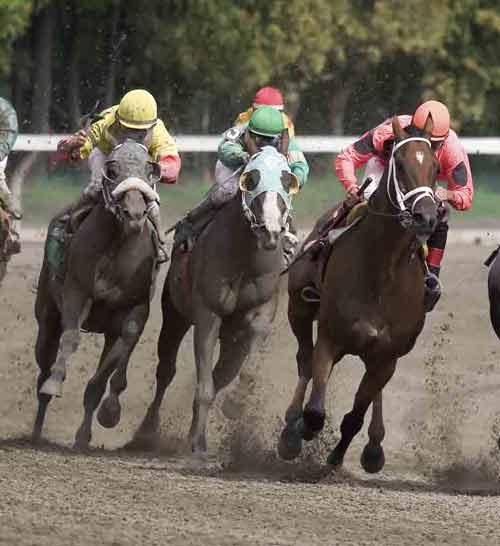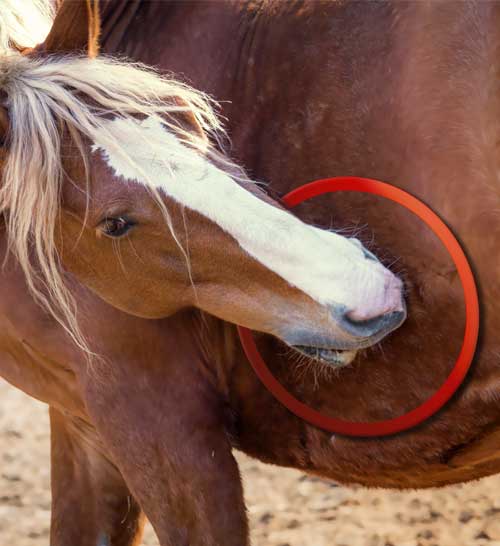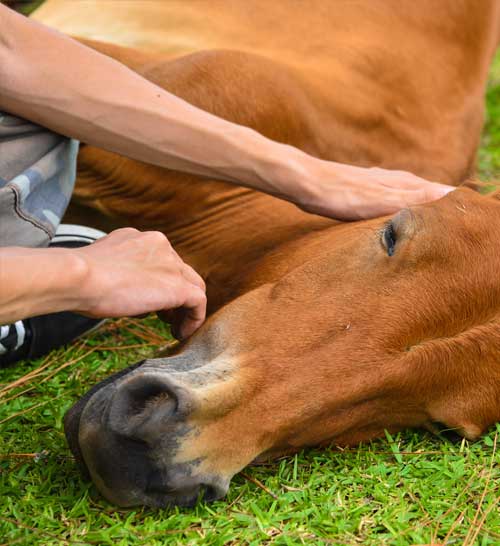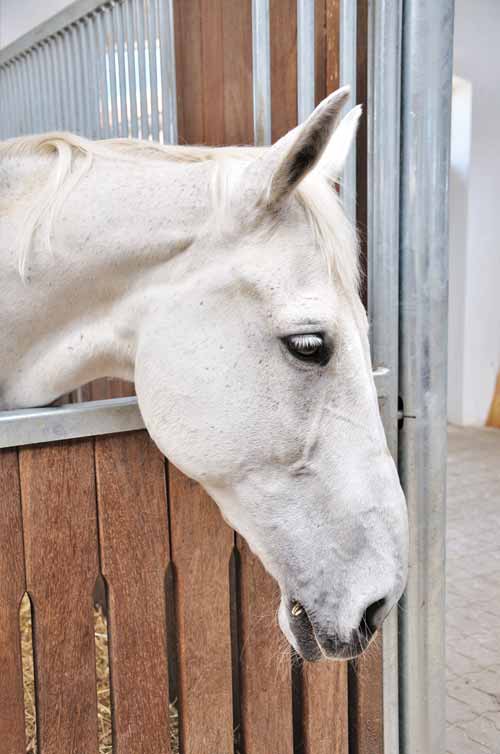Diagnosing Ulcers in Horses
Ulcers are becoming more and more common in all kinds of horses. Up to 90% of all racing horses, 80% of foals and even 15% of horses just standing in the field as pasture ornaments have ulcers. This is really important because the textbooks back in the 1970's taught us that horses were not capable of getting ulcers. People thought that grazing vegetarians who are near-constantly eating, with relatively small stomachs per body size, simply couldn't get ulcers. Today, almost every horse owner and trainer out there has dealt with ulcers in more than one horse.
In the early days, the only way we could diagnose ulcers in horses was to put a horse completely under anesthesia, have the stomach pumped, then flushed with saline solution and then pumped again, so that an endoscope camera could safely view the entire stomach for lesions. The horse had to be starved for 12 hours prior. Now, we know that the very act of starving a horse for 12 hours will produce lesions on the stomach wall; so, the method of diagnosing by scope has been modified. Today, the common practice is to pass the endoscope without anesthesia or starving, however the downside is that only about ⅓ of the stomach is visible above the water line. On autopsy, it is commonly found that many horses have duodenal ulcers as well as lower gastric (or hind gut) ulcers. The roughly 100 ft of intestine can be ulcerated all the way down, most of which is not visible by endoscope.
Even though scoping is no longer the recommended diagnostic tool, those old endoscoping studies gave us a good composite of symptoms and signs associated with ulcers - and confirmed by endoscope. So, today we can much more safely diagnose ulcers by symptoms and signs alone.
The Most Common Signs of Ulcers in Horses:
- Periodic colic, often after a foal nurses or eating
- Poor appetite
- Grinding teeth
- Excessive salivation, drooling
- Periodic diarrhea or runny stools
- Foals sometimes sit like a dog
- Weight loss and loss of top line
- Fatigue
- Poor hair coat, bleached out, dry and kinky
- Mental dullness, depression, unwillingness to perform
- Lying down more than normal
- Separation anxiety, screaming away from others
- Weakness of hind end, especially the right hind
- Resistance to saddling and/ or mounting - possibly leading one to think the saddle is not good fit
- Plays with the tongue, letting the tongue hang out
- Yawning
- Runaway/barn sour, bolting
- Gaunt appearance in the flank
- Craving for and consumption of abnormal foodstuffs
- Wood chewing
- Cribbing and wind sucking
- Paws the ground to remove topsoil and then eats the clay underneath
- Refuses grain but will eat hay
- Does not drink enough water/dehydration
- Hyper, nervous ad maybe aggressive disposition, wild
- ADD ADHD
- Frequent pawing
- Stomping of feet
- Stall kicking
- Hard Keeper
Chronic excess acidity in the stomach can lead to excess acidity in the hind gut and induce leaky gut syndrome. The signs of hind gut ulcers are different than upper gastric ulcers and requires a different product/approach: Nutrient Buffer® H/G - for the hind gut.
Pharmaceutical Drug Approaches to Excess Gastric Acid in Horses:
Gastric acid suppressors use several different kinds and modes of action. H₂ blockers / inhibitors / antagonists and proton pump inhibitors are the primary products out there. Both have a long history of creating health compromises, such as magnesium deficiencies, that have been well documented in humans - as they have been available for humans much longer than they have been used in horses. They are known to shut down the production of stomach acid, which compromises digestion and creates well-recognized nutritional deficiencies. Blocking the necessary stomach acid to properly sterilize and break down food results in an imbalance of gut flora and chronic low grade infections as well as possible overgrowth of the small intestine. Leaky gut syndrome is also on the list, and with horses, it can preclude neurological syndromes and infections like EPM.





